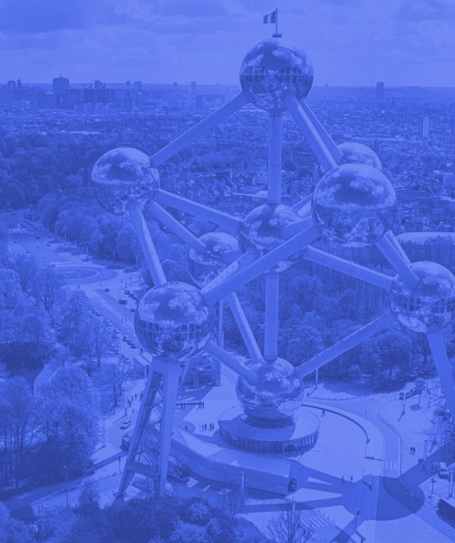Since the $5.6bn acquisition of ACS in 2009, Xerox has dramatically transformed itself from being a Product company (copiers) to a services led, technology driven organisation, providing a range of business process and document management services. Services now accounts for some 60% of their revenues.
According to Infotrends “As companies increase business process automation and leverage data to drive decision making and customer communications, the relevance of existing outsourcing contracts is declining. Growing demand for digital services that support multi-channel communications and enable a mobile knowledge work force is leaving enterprise accounts at a loss due to the lack of talent, technology and time to implement and manage these systems. Savvy and forward-thinking document outsourcing providers are in a unique position to help customers transition to more effective communication platforms

Boss Equity speaks with UK-based Andy Jones, VP, Workflow Automation of Xerox Global Services, for some insights into how Xerox has successfully repositioned itself in the market, the drivers for their service offerings and some future perspectives on the changing nature of the Document Process Outsourcing (DPO) sector
BE: Welcome to Document Boss, Andy. Can we start with some background on yourself & your current role within Xerox Global Document Outsourcing?
AJ: I have been with Xerox now for 18 years, during which time I have been involved in a number of areas, including forming our ECM systems integration business back in 1995, being part of the leadership team that established Xerox Global Services (XGS) in the early noughties, innovating new services offers that took XGS beyond historical print services and now, being appointed to run our new, worldwide Workflow Automation business. My background is quite different to what I do today!!
I began as a design engineer, specialising in high speed mechanism design and became very involved in computer aided design (CAD) techniques to improve design quality and ended up returning to University, running research and consultancy into CAD and eventually working for a prominent US CAD systems vendor, leading applications consulting. During the late 80s, I then joined a document management start-up, which was very exciting but which unfortunately, went ‘pop’ – hence I joined Xerox and went on to build their ECM practice.
Within Xerox our service business consists of three lines of business - BPO, ITO and Document Outsourcing. I have a new global role within the Document Outsourcing division, heading up our new Workflow Automation business. This is a new set of software based services for our customers, to provide them with alternatives to working with paper. Our Document Outsourcing business has been built around Managed Office and Centralised Print Services. Our new Workflow Automation offerings are a complementary set of SaaS business processes & service solutions that help our customers automate and simplify their business, through removing paper and converting them to digital working.
I am often asked the difference between Workflow Automation and our BPO business - It’s quite simple. BPO is for customers who wish to pass process responsibility to us, whereas with Workflow Automation the customer continues to run their process and we enable them to do it more efficiently and cost-effectively
BE: Xerox has long been known as the “Document Company”. How has the company changed in the past 4-5 years, particularly since the acquisition of ACS and what specific areas does Document Outsourcing cover?
AJ: We have been delivering document management and workflow solutions for over 20 years as projects to our clients on a customer-by-customer basis. The primary reason for the focus on Workflow Automation is that the market is changing and demand is growing for more advanced services. We need to get better at this and make our offering more repeatable and scalable as a core part of our business model, hence the creation of our focussed Workflow Automation business unit.
As our Document Outsource service business model changes and we see increasing pressures on the historic business models, growing our Workflow Automation business gives us new sources of revenue as well as meeting our customers demand to automate and simplify their business processes.
BE: What are the key, end user drivers, changes & trends in the market, providing an uptake in Xerox’s outsourced services? - For example, in such areas as Managed Print Services (MPS)
AJ: Our customers are constantly asking us to assist them to make improvements inside their business including, consistently delivering cost reductions. Particularly, in areas such as Managed Print, our customers acknowledge that we have already made huge reductions in the expense of having a print service inside their business. However, they are now going beyond that and are saying, ”We also want to remove bad paper & print from our business. So, Xerox, come back to us with service offerings & technologies that help us to achieve this and improve our business processes” . Of course, to achieve this, it is not just about digitising the paper but also about understanding the work processes that underpin the need to have this paper and fundamentally redefining the process to remove the dependency on paper. Without question, the biggest trend we are experiencing is our customers’ desire to digitally transform their businesses - which is very exciting.
BE: So, do you think we are we getting anywhere nearer to the paperless office?
AJ: Obviously, there is great trepidation about the word “paperless”; perhaps, “less paper” is more appropriate. However, if you look at the rate of change towards less paper, then it is definitely accelerating. The key factor driving this is that technology is beginning to catch up to where paper has been for 2000 years. The tipping point has been the arrival of affordable, reliable, connected, easy-to-use tablet/smart phone type devices. It is literally only during the last couple of years, at most, that we have arrived at this point.
At the risk of being critical of the hi-tech industry, it has taken a long time to innovate technology so that it can replicate the flexibility of paper. That day has now arrived when we can transform our processes from a paper based scenario to a user-centric, data driven scenario. In my mind, this raises an interesting question as to whether imaging and document management is the start of a new world or the last phase of the paper world? If you look at where the imaging industry has come from, my view is that the original imaging industry actually represents the final phase of our paper world - Why ? - Because all you are doing is taking a digital picture of paper and moving it around the same process, but electronically. Even though there are significant benefits (speed, governance, control) from digitisation, companies want to fundamentally change the way that information is used and processed by giving digital alternatives that essentially re-purpose business process / activities around business needs, rather than the constraints of the information format i.e. paper. That is the transformational stage and it’s starting now and will ultimately accelerate towards the mythical paperless office.
The challenge has moved beyond Capture, Store & Retrieve; there is now a fundamental, paradigm shift, which is making these solutions more efficient and customer centric. More recent hardware devices have helped this with their user interface, providing an application development environment which is faster and more flexible.. This now means that companies can evolve these processes quickly and in a more agile way than was historically possible, with large, enterprise grade software environments. So, we are going through a major change and it’s a secular change as well; we will never go back. For example, 10, 15 or 20 years ago the only place one could go to get decent IT, used to be at work. Today, generally it’s at home.
In our personal lives, we are now generally much better served from an IT perspective than corporations are able to serve us at work. This is not a criticism of the companies but a reflection of the complexity of the legacy issues they have to deal with - and the concerns around data security, affordability & their business applications. The role of the CIO is now much more challenging and our expectations as users are way ahead of what many organisations are currently able to deliver; that’s tough.
BE: How do the annual revenues of Xerox break down with respect to your hardware & managed services business?
AJ: Today, almost 60% of the Corporations revenues come from our services businesses -Quite a big change from 10 years ago, when our results were dominated by hardware sales. We see the services percentage growing in the future.
BE: How has Xerox been able to maintain the strength of its traditional copier & office products and distribution channel as the company migrates to a more services oriented business model?
AJ: From a technology product development perspective, we continue to invest very heavily in devices, both ourselves and with strategic partnerships, such as Fuji Xerox, for example. What is interesting is that the focus has moved beyond the basic “speeds and feeds” towards the software layer to provide a set of devices that can fit into the client’s software environment, connect to any enterprise-wide application and be accessible from any location. For example, MFP’s are now regarded as an IT asset that can add value by integrating into a business process rather than the machine that ‘Facilities’ provided. Xerox also has developed a strategy called “ConnectKey” which is a software layer that has a common interface across all our devices, providing a consistent user and application experience, independent of the physical device being supported. This is a good example of how something once regarded as a basic office device, today has a place and role within enterprises application architecture - another part of the digital transformation we are all living.
BE: How does the UK & European market differ from North America with respect to Xerox Global Services’ business? Are there any unique differences between user requirements and acceptance of such services between these two major markets?
AJ: From a geographic perspective, there are slight differences between countries and regions. Generally, customers want to achieve the same type of things on a global basis. The major difference is around the various applications. Differences in the business models & objectives between governments, healthcare & financial services, with varying local regulations and conditions on how these industries work. However, all organisations have a hunger to get cost under control and out of the business, to run their businesses more efficiently.
The challenge for us as a provider is how we can provision technology & services to customers that have relevance to their specific business problems and how we can meet our responsibility to help clients adopt the right solution. The adoption issue is something I believe we, as an industry, constantly overlook. I frequently hear CIOs express their frustration around what they actually achieved versus the promise of the supplier. Over the past 20 years, particularly software companies, have over-promised in their marketing messages, compared to what has been achieved by their customers. I believe this has created an issue for the high tech and IT industry, which needs to be faced, if we are to retain our customer trust.
Central to this, is failing to address the transformational change the client needs to make to their processes and operations in order to gain maximum benefit from enterprise software investments.
Of course, generally the software works, but what is frequently missed is how best to get the organisation adopt it. We believe there is a need to work with organisations to help change the way they are running their businesses to take advantage of what the software can do for them. It is therefore, as much about “change management” as it is technology.
This where an outsourced business arrangement can offer more promise to a customer than a traditional SW license based model. For example the BPO business model is an outcome based service as opposed to the promise of the software products themselves. This creates a mutual win-win between provider and customer who are focussed on a common business outcome so creates an environment to drive improvements. We are taking the same approach with our new Workflow Automation business. We believe the end to end process of customer engagement from needs analysis through support is as important as the technical offering itself.
BE: How do you see the DPO market evolving within your overall BPO business and what new trends do you see emerging over the over the next 2-3 years?
AJ: We have a substantial BPO business, resulting from the ACS acquisition. This is a core part of Xerox Services. We are recognised leaders in a number of sectors, including Transportation, Healthcare, Finance and Administration, Human Resources. Similarly, our Document Outsourcing has consistently led the market, helping customers gain control and improve their document intensive business processes. The big trend we see emerging is customers wanting to digitally transform their business, taking advantage of mobile technology to bring agile working, using insights gained from analytics to improve and deliver whole new ways of working and higher levels of productivity. Increasingly, we see customers wanting choices between full process outsourcing or improving in-house. With the combined strengths of our BPO and DO business we are confident of meeting these growing needs.
BE: With respect to M&A activity, is Xerox more likely to build versus buy, particularly in the area of Enterprise Application software?
AJ: I don’t think it’s a case of one or the other. We have developed some excellent software technology inside the organisation, especially in the areas of recognition / classification and analytics; we are also leveraging software assets used by our BPO colleagues and continue to look at strategic partnering and potential acquisitions. So, inevitably, it will be a combination of all of the above.
BE: What do you consider are the most important elements of building a world class Global Outsource Services business?
AJ: Unfortunately, in my experience there is no silver bullet - other than commitment and a lot of hard work! Over the years, I have found a few basic principles make a big difference. Focus is very important; there are many things that could be done but in today’s market success comes from being truly excellent, which requires focus on specific market opportunities that leverage organisations’ know-how and expertise.
Our customers are very smart so for us to help them we also need to be able to bring true value add, which comes from a significant depth of understanding and expertise. The next key factor is people; they are the soul of an outsourcing business, especially if you want to transform a customer process rather than simply “lift and shift”. So, having strategies around acquiring, developing and retaining key talent is critical.
Operational excellence is the next critical area – At the end of the day, this is what customers are buying into when entering into an outsourcing contract. In my experience, companies outsource not just to make savings but also to improve and they expect providers to bring innovation throughout the contract lifecycle. Of course, technology is also important as this is the enabler for change and improvement. However, technology alone doesn’t bring success … that’s the difference between a technology provider and a service provider where we are focussed on the business outcome, delivered through applying technology rather than the technology itself – Which is a very powerful.
BE: Andy, many thanks for giving us an insight into your work at Xerox; it has been very interesting and informative.







